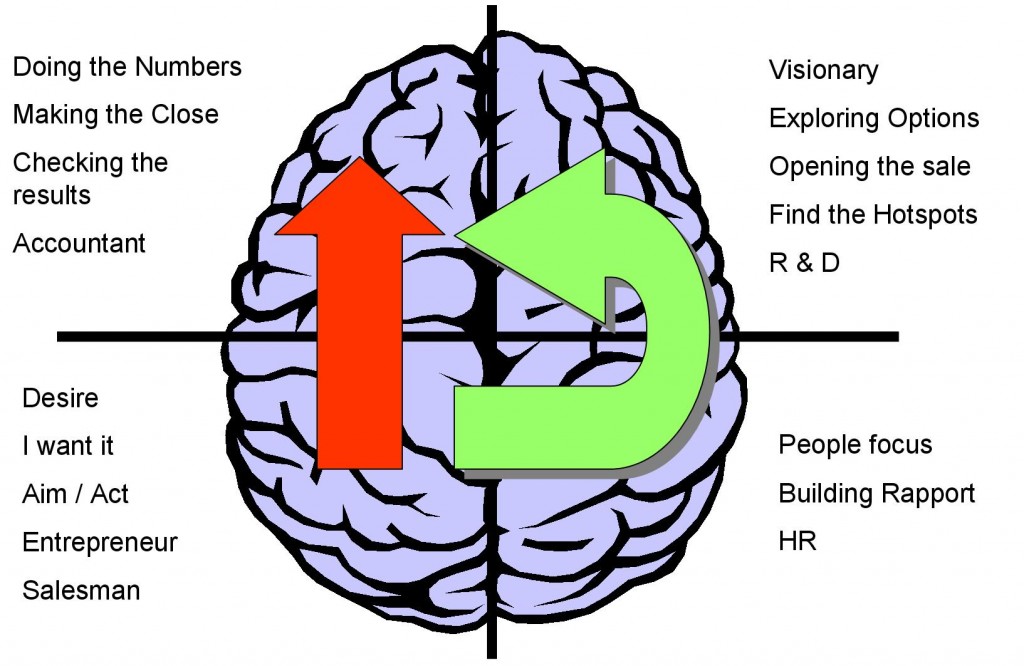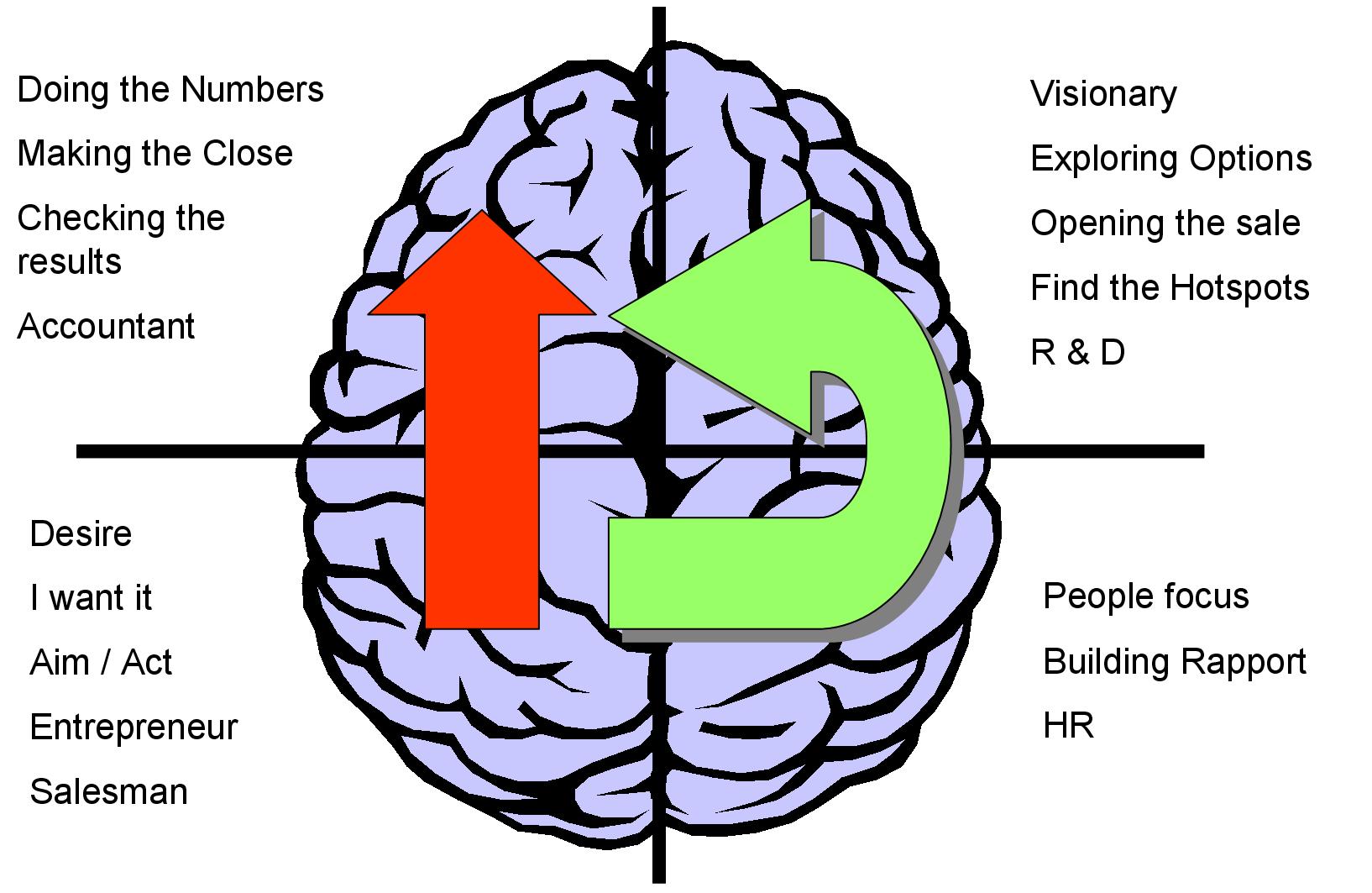 Right brain individuals are attributed with intuitive thinking and more emotional reasoning which guides most of their decisions throughout the day. While those folks considered predominantly left brain are more sequential thinkers, time-oriented, calculating types. Of course most people are a little of both, but we all have a predisposition to one side or the other.
Right brain individuals are attributed with intuitive thinking and more emotional reasoning which guides most of their decisions throughout the day. While those folks considered predominantly left brain are more sequential thinkers, time-oriented, calculating types. Of course most people are a little of both, but we all have a predisposition to one side or the other.
Our brains like to learn and in a very specific way. As we discover more about right and left brain activities, we’ve come to understand the benefits of merging the best of both worlds. Neurosculpting works by integrating the two sides of the brain. It’s like hiring the best towing service St Louis MO can provide to pull more intellectual weight by balancing the two sides which results in clearer thinking and less stress.
Utilizing meditation/mindfullness techniques and brain science, Neurosculpting breaks down and teaches how to achieve a level of calm, clear and stress free reaction to situations that may have otherwised triggered anxiety.
The brain gets all excited with the input of new information and the flood of neuro activity. It’s then possible to direct specific attention to the task at hand. In this case, our focused attention is on learning the art of riding a bike. The next time we get on a bike all of that brain mapping or learned imprint is readily recalled and comes back to us when we want it for years to come.
Neuro mapping either through fear or novelty.
Anyone who is suffering a phobia can link it back to an occasion that was associated with some intensity. For example, if you have a fear of water it may come from being tossed in a pool as a small child and told to swim, but instead floundered and flailed until someone came to your rescue. You may or may not consciously remember the event, but now as an adult have an unreasonable fear of water.
Neuro mapping through novelty can arise when something happens that is unexpected. If you’ve ever been surprised you probably remember the details of that occasion. Many years ago while at a Renaissance Fair being held outside of Los Angeles, California I was so intently captivated by a juggler on a high wire rope that I forgot about everything else around me.
Suddenly I realized I had lost track of my friends and turned around only to encounter a comical face mere inches from my own. It was all in good fun and I ended up laughing at the prank, but to this day I can clearly see the man made up in mid-evil grime and blacked out teeth staring me eye to eye. It is the thing I remember most of the whole day.
With Neurosculpting you re-train your brain. With the help of a practioner you will be guided to quiet your stored fears by focusing on safe, predictable things that you know you can count on that are within your environment or body. Another integral part of the process of neurosculpting is the use of story telling.
Using a script while the brain is primed to pay attention to the “new” story and not retrieve the usual “old” fears associated to an event allows a new experience to replace an old one. A facilitator will help you by noticing and redirecting breathing patterns and other physiological triggers. The process helps the participant alternate the analytical desire with the experiential desire – working with the best of the right and the left brain functions.
By sculpting and redirecting an experience that has been neuro mapped, entrenched into the chemistry of the brain, the desired outcome is lessened trauma, stress and otherwise negative emotions that can be transmuted into healthier and happier states of mind. This process gives you tools to navigate your daily world more successfully.
Leave a comment below and let me know what you think of this brief introduction to Neurosculpting. Is it a process you might find useful? Would you like to to learn more?
